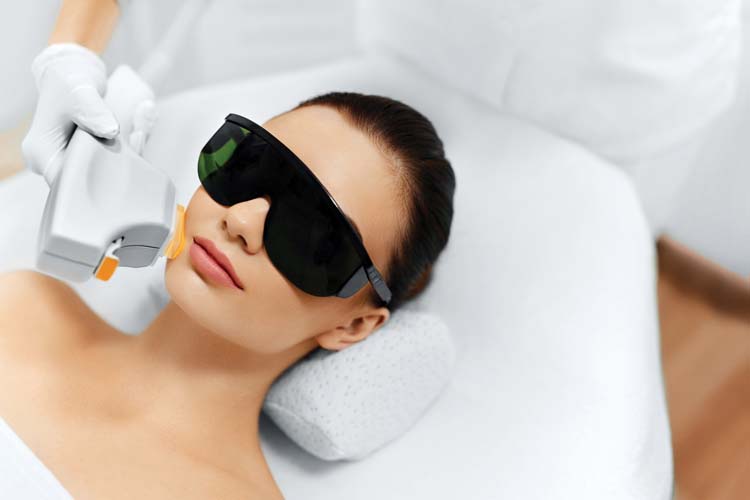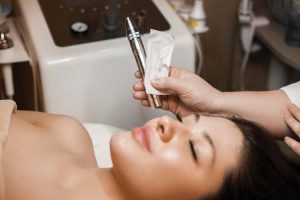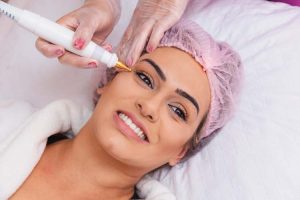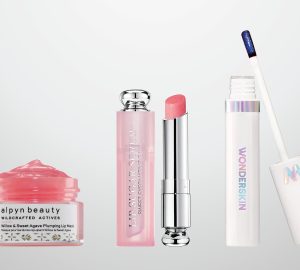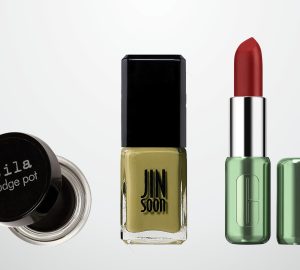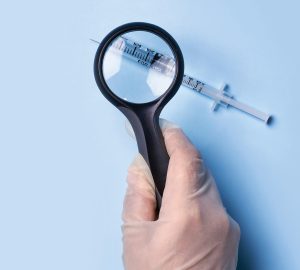As the weather gets colder, we’re all looking forward to the winter holiday season. It’s a time to celebrate with friends and family, many whom you may not see throughout the rest of the year. To ensure you can put your best face forward, November is the perfect time for skin care treatments. We reached out to Stephanie Bruner, director of nursing at The Face & the Body Spa, to learn about what procedures are popular during the pre-holiday period.
Since fall means spending more time indoors, it’s perfect for procedures that require people to stay out of the sun, according to Bruner. Treatments such as chemical peels and laser resurfacing remove the top layers of the skin, so patients are cautioned to avoid exposure to ultraviolet light in order to prevent damage. If you are wanting to look you best for holiday celebrations, Bruner suggests looking into treatment now. “For optimal results, a lot of procedures take around a month,” she notes. “I wouldn’t suggest having treatment done less than two weeks in advance of an event, unless it’s something like a facial, which offers immediate results.”
Bruner notes that winter is a great time to start thinking ahead to warmer weather, especially since with most procedures, the best results come with a series of treatments. “Starting now and continuing through the winter will guarantee that you’re ready for summer,” she says. “We suggest that patients wait for full cell turnover before returning for another round of treatment. For someone in their 40s, that is around four weeks. Similarly, it is five weeks for someone in their 50s, and a person in their 60s should wait six.”
Intense Pulse Light Therapy
“Right now, it’s IPL season,” Bruner says. “It corrects hyperpigmentation and texture issues caused by sun damage, using high-intensity pulses of visible light.” Similar to laser treatments, IPL uses light energy to cause controlled damage to a specific area. It is non-ablative, meaning it targets lower layers of the skin rather than the top. “It causes pigment to rise from the lower layers and then slough off,” Bruner explains. “The pigment does get darker for around a week as it comes to the surface. It likely won’t be too noticeable for everyday life, but it’s something to consider for events. For the best results, we recommend at least three treatments.”
Radiofrequency Microneedling
Traditional microneedling uses small needles to create micro-injuries on the skin, triggering tissue repair and the production of collagen and elastin. Radiofrequency microneedling introduces radiofrequency waves, which enhance the effects by heating deeper layers of the skin. “With traditional microneedling, the needle marks may be visible for around a week after treatment,” Bruner says. “By applying radiofrequency, the body doesn’t react as aggressively, so people generally experience less redness. You can get it done over lunch, be back in the office that afternoon, and no one will realize you’ve had a procedure.”
Bruner recommends combining radiofrequency microneedling with platelet-rich plasma (PRP). It uses the growth factors in a person’s blood to stimulate cell turnover. The process works by collecting the patient’s blood and placing it into a centrifuge that separates the red blood cells from the PRP. The PRP then can be injected or applied topically. “Applying it while the channels created by mirconeedling are still open will improve your results,” she explains.
Fibroblast Therapy
Fibroblasts are collagen- and protein-producing cells in the dermis, the layer of skin directly below the surface. They play an important role in healing wounds and maintaining firmness and elasticity. Fibroblast therapy uses a pen-like device to deliver high-frequency electric currents to small areas of skin, breaking down proteins and stimulating fibroblast activity. “It helps tighten skin and reduce fine lines and wrinkles,” Bruner says. “It’s great for treating crow’s feet or crepiness around the eye.” She adds that fibroblast therapy does create scabs that fall off after about a week, and skin redness can persist for a couple weeks after the scabs are gone. “It’s perfect if you want to look your best for an event that is around two months away,” she explains. “I wouldn’t recommend fibroblast therapy if you have something planned that is only in a few weeks.”
other popular winter procedures
- Laser hair removal
- Chemical peel
- Hydrafacial & other facials
- Injectables, such as Botox & dermal fillers
- Coolsculpting & Emsculpting





